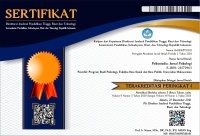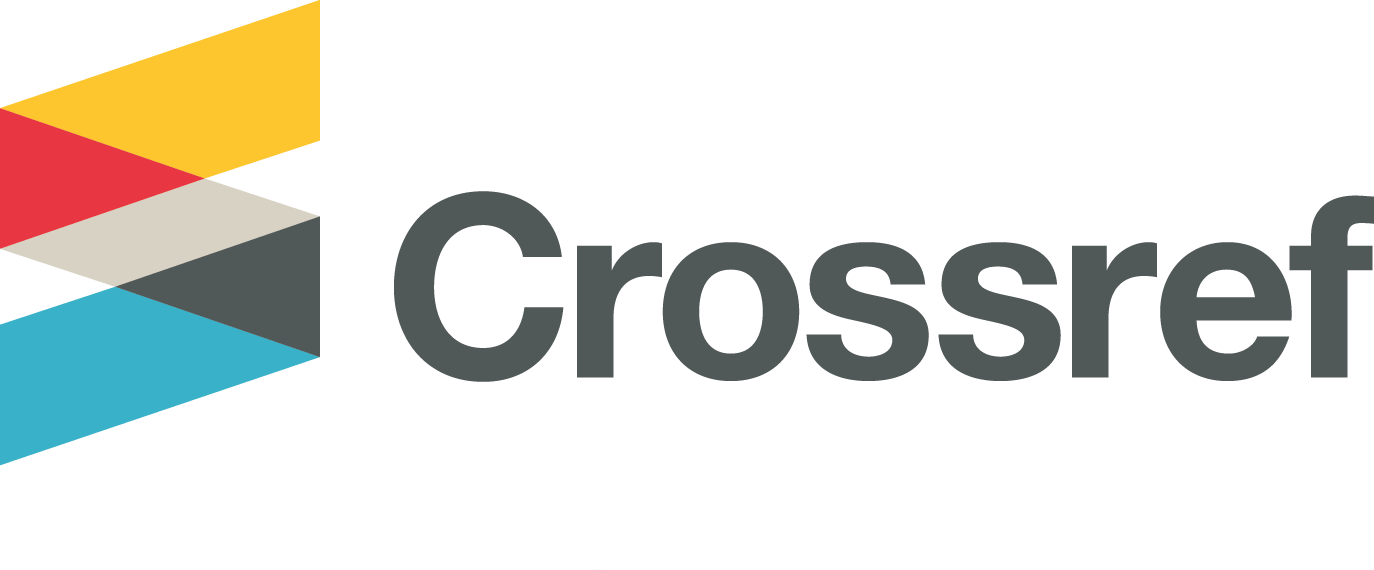Self-Concept, Reference Group and Cosmetic Purchase Decision Among Early Adult Man in Yogyakarta
Abstract
Cosmetics are only for women to use? That's not the era anymore. Cosmetics were originally only used and intended for women. With the development of the times, now men are starting to take care of themselves by using cosmetics. The influence of self-concept on the needs of the body, skin and appearance and reference groups such as friends, family and the internet make them decide to buy and use cosmetics. This study aims to determine the relationship between self-concept and reference groups with the decision to purchase cosmetics in early adult men. The type of research used is quantitative approach. The subjects in this study were 185 early adult male cosmetic users who live in Yogyakarta. The research hypothesis is that there is a positive relationship between self-concept, reference groups and cosmetic purchasing decisions in early adult men. Data were collected using a purchase decision scale developed from the theory of Peter & Olson, a self-concept scale according to the theory of Calhoun and Acocella, and a reference group scale, developed from Setiadi's theory. The results of the regression analysis showed R = 0.56 and F = 5.01 with a significance of 0.03 (p < 0.05). The results showed that there was a positive relationship between self-concept and reference groups with cosmetic purchase decisions for men in Yogyakarta. Self-concept and reference groups make an effective contribution of 31% to purchase decisions with details of reference groups having an effect of 29% and self-concept by 2%. This shows that the reference group has a greater influence than self-concept in shaping cosmetic purchase decisions.
Kosmetik hanya digunakan wanita? Sudah bukan jamannya lagi. Kosmetik pada awalnya hanya digunakan dan ditujukan untuk wanita. Seiring berkembangnya zaman, kini para pria mulai merawat diri dengan menggunakan kosmetik. Pengaruh konsep diri terhadap kebutuhan tubuh, kulit dan penampilan serta referensi kelompok seperti teman, keluarga dan internet membuat mereka memutuskan untuk membeli dan menggunakan kosmetik. Penelitian ini bertujuan untuk mengetahui hubungan antara konsep diri dan kelompok acuan dengan keputusan pembelian kosmetik pada pria dewasa awal. Jenis penelitian yang digunakan adalah pendekatan kuantitatif. Subjek dalam penelitian ini adalah 185 orang pengguna kosmetik pria dewasa awal yang berdomisili di Yogyakarta. Hipotesis penelitian adalah terdapat hubungan positif antara konsep diri, kelompok acuan dengan keputusan pembelian kosmetik pada pria dewasa awal. Pengumpulan data menggunakan skala keputusan pembelian yang dikembangkan dari teori Peter & Olson, skala konsep diri menurut teori Calhoun dan Acocella, dan skala kelompok acuan yang dikembangkan dari teori Setiadi. Hasil analisis regresi menunjukkan R = 0,56 dan F = 5,01 dengan signifikansi 0,03 (p < 0,05). Hasil penelitian menunjukkan terdapat hubungan positif antara konsep diri dan kelompok acuan dengan keputusan pembelian kosmetik pada pria di Yogyakarta. Konsep diri dan kelompok acuan memiliki sumbangan efektif sebesar 31% terhadap keputusan pembelian dengan rincian kelompok acuan berpengaruh sebesar 29% dan konsep diri sebesar 2%. Hal ini menunjukkan bahwa kelompok referensi mempunyai pengaruh lebih besar daripada konsep diri dalam membentuk keputusan pembelian kosmetik.
Keywords
Full Text:
FULL TEXTReferences
Adams, G.R.; Berzonsky, M. D. (2006). Blackwell handbook of adolescence. Blackwell Publishing.
Agung, S., Handayani, D. P., & Indrawati, K. R. (2016). Peran Konsep Diri dan Konformitas terhadap Keputusan Pembelian Make Up pada Mahasiswa Perempuan. Jurnal Psikologi Udayana, 1, 25–34.
Ajitha, S., & Sivakumar, V. J. (2017). Understanding the effect of personal and social value on attitude and usage behavior of luxury cosmetic brands. Journal of Retailing and Consumer Services, 39(June), 103–113. https://doi.org/10.1016/j.jretconser.2017.07.009
Calhoun, J.F.; Acocella, J. R. (1990). Psychology of adjusment and human relationship (3rd Editio). Mc Graw Hill.
Ding, S., Lin, J., & Zhang, Z. (2020). Influences of reference group on users’ purchase intentions in network communities: From the perspective of trial purchase and upgrade purchase. Sustainability (Switzerland), 12(24), 1–18. https://doi.org/10.3390/su122410619.
D’Souza, C., Taghian, M., & Lamb, P. (2006). An empirical study on the influence of environmental labels on consumers. Corporate Communications, 11(2), 162–173. https://doi.org/10.1108/13563280610661697
Ersoy, N. F., Yolal, M., Batmaz, B., Ersoy, N. F., Yolal, M., & Batmaz, B. (2015). Cosmetic Consumption of Metropolitan Males in a Developing Country. Journal Studia Universitatis Babes-Bolyai Negotia, 22(January), 5–22. http://econpapers.repec.org/article/bbnjournl/2015_5f3_5f1_5fersoy.htm
Fauziya, S., & Lutfi, I. (2019). The Influence Of Reference Group And Perceived Quality Toward Purchase Decision Of Decorative Cosmetics For Lips Without The Halal Label. Tazkiya: Journal of Psychology, 5(2), 275–287. https://doi.org/10.15408/tazkiya.v22i2.8411
Fern, S., Ling, C., Kumar, A., Hua, K., & Kit, J. (2022). Technological Forecasting & Social Change Investigating the impact of AI-powered technologies on Instagrammers ’ purchase decisions in digitalization era – A study of the fashion and apparel industry. 177(October 2021).
Fitriani, & Romas, M. Z. (2014). Hubungan Konsep Diri dengan Perilaku Konsumtif Pada Remaja Di SMK Kesehatan. In Junal Psikologi (Vol. 10, Issue 1, pp. 16–22). https://ejournal.up45.ac.id/index.php/psikologi/article/download/114/110
Ghazali, E., Soon, P. C., Mutum, D. S., & Nguyen, B. (2017). Health and cosmetics: Investigating consumers’ values for buying organic personal care products. Journal of Retailing and Consumer Services, 39(March), 154–163. https://doi.org/10.1016/j.jretconser.2017.08.002
Girdwichai, N., Chanprapaph, K., & Vachiramon, V. (2018). Behaviors and attitudes toward cosmetic treatments among men. Journal of Clinical and Aesthetic Dermatology, 11(3), 42–48.
Gonzalo Silvestre, T., & Ubillos Landa, S. (2016). Women, Physical Activity, and Quality of Life: Self-concept as a Mediator. The Spanish Journal of Psychology, 19(6), 1–9. https://doi.org/https://doi.org/10.1017/sjp.2016.4
Hahn, K.H. & Ma, Y.J. (2011). Self-concept and Decision-making Styles: A Comparison between Young Korean and American Consumers", Research Journal of Textile and Apparel, Vol. 15 No. 1, pp. 81-97. https://doi.org/10.1108/RJTA-15-01-2011-B010
Haryono, G. (2017). Pembelian Pada Mahasiswa STIE-SAK Pada Pembelian Samsung. Jurnal Ekobistek Fakultas Ekonomi, 6(2), 200–207.
Helgeson, J.G., & Supphellen, M. (2004).” A conceptual and measurement comparison of self-congruity and brand personality: the impact of socially desirable responding”. International Journal of Market Research, Vol.46.
Helm, S. V., Renk, U., & Mishra, A. (2016). Exploring the impact of employees’ self-concept, brand identification and brand pride on brand citizenship behaviors. In European Journal of Marketing (Vol. 50, Issues 1–2, pp. 58–77). https://doi.org/10.1108/EJM-03-2014-0162
Irawan, V., & Widjaja, A. W. (2011). Pengembangan Model Perilaku Konsumen Pria Dalam Membeli Produk Perawatan Kulit (Skin Care) Di Indonesia. ULTIMA Management, 3(1), 16–30. https://doi.org/10.31937/manajemen.v3i1.173
Kotler, P., & Keller, K. . (2016). Marketing Management (15th ed.). Pearson Education.
Nguyen, T. T. N. (2020). Developing and validating five-construct model of customer satisfaction in beauty and cosmetic E-commerce. Heliyon, 6(9), e04887. https://doi.org/10.1016/j.heliyon.2020.e04887
Norusis, M. J. (2010). PASW statistics 18 guide to data analysis. Prentice Hall Press.
Peter, P. J., & Olson, J. C. (2010). Consumer Behavior & Marketing Strategy. In Mc Graw (9th Ed.). Mc Graw Hill.
Pickett‐Baker, J., & Ozaki, R. (2008). Pro‐environmental products: marketing influence on consumer purchase decision. Journal of Consumer Marketing, 25(5), 281–293. https://doi.org/10.1108/07363760810890516
Potter, P.A.; Perry, A.G.; Hall, A.; Stockert, P. A. (2013). Fundamental of Nursing. In Ranking File for the Nurses. Elsevier Mosby. https://doi.org/10.5005/jp/books/12386_1
Rieder, E. A., Mu, E. W., & Brauer, J. A. (2015). Men and cosmetics: Social and psychological trends of an emerging demographic. In Journal of Drugs in Dermatology (Vol. 14, Issue 9, pp. 1023–1026).
Schiffman, L.G. ; Kanuk, L. L. (2010). Consumer Behavior (10th Editi). Pearson Prentice Hall.
Setiadi, N. J. (2019). Perilaku Konsumen: Perspektif kontemporer pada motif, tujuan dan keinginan konsumen (3rd ed.). PrenadaMedia Group.
Suseno, M. N. (2012). Statistika: Teori dan Aplikasi untuk Penelitian Ilmu Sosial dan Humaniora. In Ash-Shaff. Ash-Shaff.
Tirtayasa, I.G., Budiartha, I.N.P., & Ujianti, N. M. P. (2022). Perlindungan konsumen terhadap peredaran kosmetik yang mengandung zat berbahaya di kota denpasar. 3(1), 1–5. https://doi.org/https://doi.org/10.22225/jkh.3.1.4224.1.5
Tranggono, R.I.; Latifah, F. (2007). Buku Pegangan Ilmu Pengetahuan Kosmetik. PT Gramedia Pustaka Utama.
Utami, S. A. R., & Ratna, N. W. (2019). Pengaruh brand image dan product quality terhadap purchasing decision produk Lipstik Wardah Di Kota Sukabumi. Cakrawala, 2(2), 40–49.
Yang, L., Xu, M., & Xing, L. (2022). Exploring the core factors of online purchase decisions by building an E-Commerce network evolution model. Journal of Retailing and Consumer Services, 64(September 2021), 102784. https://doi.org/10.1016/j.jretconser.2021.102784
DOI: http://dx.doi.org/10.30872/psikostudia.v14i3.16877
Refbacks
- There are currently no refbacks.
Copyright (c) 2025 Lia Fajrina Binuril Hidayati, Miftahun Ni’mah Suseno

This work is licensed under a Creative Commons Attribution-ShareAlike 4.0 International License.
Psikostudia: Jurnal Psikologi is indexed by :
PSIKOSTUDIA: Jurnal Psikologi Published by Faculty of Social and Political Siences, University of Mulawarman, Samarinda, East Kalimantan and This work is licensed under a Creative Commons Attribution-ShareAlike 4.0 International License.
_________________________________________
PSIKOSTUDIA: Jurnal Psikologi
Department of Psychology
Faculty of Social and Political Siences, University of Mulawarman
Jl. Muara Muntai Kampus Gn. Kelua Samarinda 75411
Phone: +62 813 35350368
E-Mail: psikostudia@fisip.unmul.ac.id




















